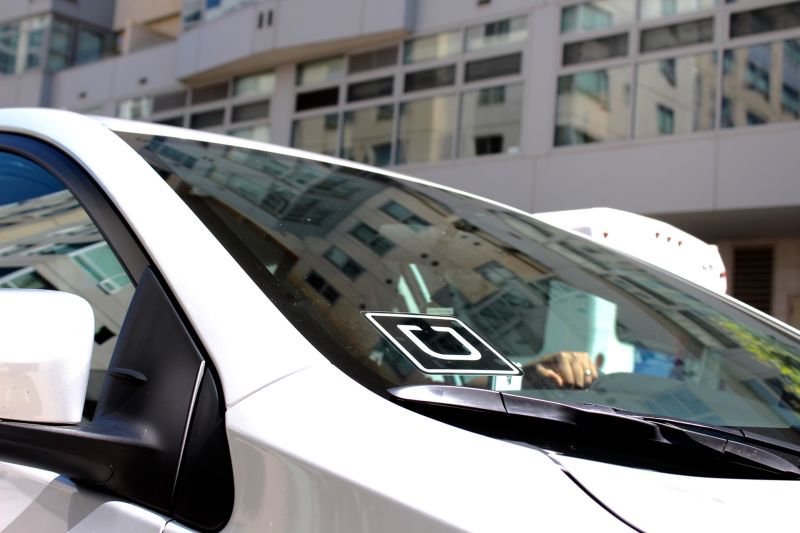"The reason we didn’t provide charts on all the data [is] we’re still evaluating the data and communicating with some of the companies on some of the data issues," Valerie Kao of the CPUC's Safety and Enforcement Division told the commission.
Collisions
The numbers indicate collisions and incidents involving ride service drivers are climbing.
"If it’s normalized by miles driven, you’d expect the number of incidents to be somewhat stable over time," said Matute. The increase is concerning, he said, "because that would be indicative of TNCs being less safe as they scale up."
Kao, the CPUC’s analyst, said most of the incidents were minor fender benders or rear-end collisions. The report listed the number of "incidents/collisions" involving pedestrians and bicyclists, though it did not highlight how many involved injuries or deaths.
More than 300 of the “incidents” involved passengers opening doors into traffic. Ninety collisions were doorings of people on bikes, skateboards, motorcycles and scooters. The report counted 200 incidents where a bicyclist or pedestrian was "struck," or "made contact with" or "involved." And it added this detail: Drivers “rolled over” passengers’ feet 100 times.
Currently, the report says, more than 30,000 new drivers are being trained every month by the TNCs, although Kao said that number is probably overstated because it doesn't reflect inactive drivers, or drivers who work for both Uber and Lyft, for example.
At the meeting, Commissioner Catherine Sandoval, who noted that a driver once hit her while she was walking, said pedestrian and bicyclist safety training should be included.
“I think that having some training around this area would be very important. There are areas like San Francisco that are known hot zones for these collisions,” she said.
In 2013, an Uber driver was charged with vehicular manslaughter for hitting and killing 6-year-old Sofia Liu as she and her family were walking in a crosswalk on San Francisco’s Polk Street. In July, Uber settled a lawsuit with the Liu family.
The data say Uber paid an average insurance amount of $6,500 per incident. It did not indicate fault in the incidents and collisions. CPUC officials did not immediately respond to questions about the data.
Evening Rides
More than 30 percent of all trips were taken in the evening, between 7 and 10 p.m., an indication that many are using the services for social outings, said Matute.
"People are using transportation network companies after the peak hours for transit service, when it's dark, when they might not feel comfortable bicycling," said Matute.
What was most interesting about the data to Matute was that 30 percent of rides were 3 miles and under, and nearly half of all trips cost $10 or less.
"That showed me that they were primarily trips where biking could have potentially been a viable option. They might be trips where transit wouldn't be a viable option," said Matute, who added it's also possible short trips may have combined transit and ride services.
Uber 'Defied' Requirements
Some of the data, according to regulators, was difficult to get from the largest transportation network company, Uber, which was threatened in July with suspension and a $7 million fine by an administrative law judge for failing to meet all the reporting requirements.
When it came to submitting detailed data by Zip code, regulators say what Uber submitted was “useless” and “suffered from a serious lack of precision.” The company argued the data would reveal trade secrets, offering competitors clues on where to expand “without conducting market research.” CPUC representatives stressed in emails that they could not legally release the data.
Uber has since complied with all the data requirements, except for one, after it exhibited “outright defiance,” regulators alleged in September, in a written response to the company’s appeal.
Regulators said Uber submitted explanations that weren’t adequate for analysts to identify the cause of certain incidents in its report on problems with drivers. But they agreed to suspend daily fines for Uber until the full commission provides guidance on “what constitutes an adequate explanation of ‘cause.’ ”
An administrative law judge is currently reviewing Uber's appeal, according to a CPUC spokesman.
More Data Needed
Experts say more data and even user surveys will be needed to assess what impact ride services are having on Californians' transportation habits and the environment. Transportation agencies, in particular, are eager to assess the data to see if ride services are causing people to shift modes, using it as the first and last mile to transit, among other things.
But so far, ride service companies and the CPUC have been slow to release useful data, though Lyft has released heat maps and other information to the San Francisco County Transportation Authority and the Southern California Association of Governments.

